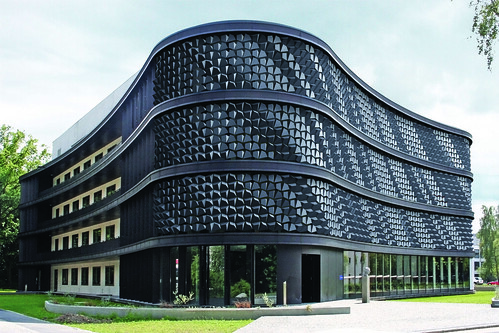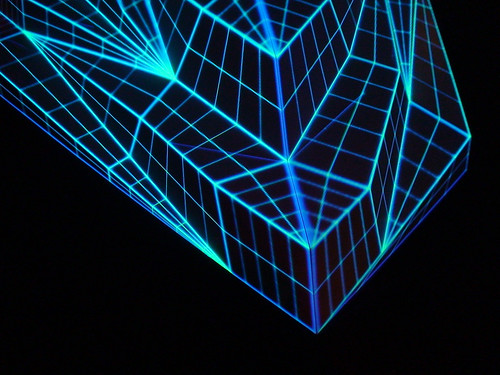 photo by http://www.baunetzwissen.de/imgs/21535783_6252c4101a.jpg
photo by http://www.baunetzwissen.de/imgs/21535783_6252c4101a.jpg photo by http://hyposurface.org/
photo by http://hyposurface.org/ photo by http://hyposurface.org/
photo by http://hyposurface.org/Quellen:
 photo by http://www.baunetzwissen.de/imgs/21535783_6252c4101a.jpg
photo by http://www.baunetzwissen.de/imgs/21535783_6252c4101a.jpg photo by http://hyposurface.org/
photo by http://hyposurface.org/ photo by http://hyposurface.org/
photo by http://hyposurface.org/Hier folgt eine Auswahl an Möglichkeiten zum Thema Temperatur Empfindlichkeit:
Shi Yuan - Blooming Wallpaper
Dies ist eine Tapete, dass „blühtet“ wenn die Heizung an ist…
Photo & Design by http://www.shiyuan.co.uk/
Photo & Design by http://www.shiyuan.co.uk/
Photo & Design by http://www.shiyuan.co.uk/
Elliat Rich - Yala Sofa
Nun folgt ein temperatur empfindliches Sofa…
Photo & Design by http://www.elliatrich.com/projects/yala-sofa/yala-sofa-awaiting-1.php
Auch der deutsche Architekt J.Meyer H. hat hierzu einiges einfallen lassen:


Und daraus folgt ein kompletter temperatur empfindlicher Raum.


 Photo & Design by http://www.jmayerh.de/
Photo & Design by http://www.jmayerh.de/
Hansa - Canyon
So erreichen Armaturen neue Dimensionen…
Photo & Design by Hansa.de
Alsa Corp
Nun wer nicht genug bekommen kann…
Bodyfaders
Photo & Design by http://www.bodyfaders.com/
"Magic Tasse"
hab auch so eine „Magic Tasse“ daheim…
Photo & Design by http://www.print-now.de/images/product_images/popup_images/5_2.jpg
 photo by http://www.bauderfilm.de/christopher_bauder.html
photo by http://www.bauderfilm.de/christopher_bauder.html Flickr-photo by whitevoid
Flickr-photo by whitevoid Flickr-photo by whitevoid
Flickr-photo by whitevoid photo Kengo Kuma - Breathing Architecture ISBN 978-3-7643-8787-7
photo Kengo Kuma - Breathing Architecture ISBN 978-3-7643-8787-7 photo Kengo Kuma - Breathing Architecture ISBN 978-3-7643-8787-7
photo Kengo Kuma - Breathing Architecture ISBN 978-3-7643-8787-7ƒ5³ _ framework 5*5*5 refers to informatics' modular workspace, called a framework. Here, ƒ5³ 's "frames" constitute the framework, a space built up by five modules of 2*2m, divided in 5*5 squared elements, establishing a matrix of 5*5*5 = 125 modules. At the one side diffusing the light (white) and at the other side absorbing the light ( black ), the modules constitute a binary language (0,1) and a space of 125 pixels, allowing to transcribe captured data from the physical environment in a kinetic and luminous play _ in between opening and closing, in between transparency and reflection, in between light and dark."
photo by LAB[au]
photo by LAB[au]
1.You have been influenced by?
Lab[au]:"Since it’s founding in 1997 LAb[au] explores digital architecture and MetaDesign focusing on the question “how technologies of computation and communication transforms the construct of space on the level of its perception, interaction and meaning”. LAb[au] projects span across a broad range, from experimental projects proper to the one of a lab to the one of production (bau = the construction). Our agency name LAb[au] is thus the result of different readings and pronunciations _ the one of the French phonetic writing of laboratory, ‘labo’ standing for a place of artistic and technological experimentation and research and the German reading of ‘bau’ which stands for construction and realisation. From this view point our references reside in the experimental and technological approach on art, such as the cybernetic art of the sixties and more precisely the one of Nicolas Schöffer, among many others. Further on, the use of ‘Bau’ isn’t innocent and directly refers to the Bauhaus movement which for us stands as a breaking point in the artistic quest to examine and rearticulate the technological progress in relation to artistic practice and aesthetics. Their advance of industrial design stands for an artistic practice based on methods according to a technological progress, the industrial revolution which has a lot of common points to the questions we face according to the informational revolution we face nowadays. Mostly the methodological and reductionist approach in order to research is a proper aesthetic and practice, the one of design is a common ground for our work. Therefore we describe our work as MetaDesign describing this form of research in relation to advanced technologies of computation and communications."
2.What made you come up with the lighting concept at the
Lab[au]:"
Since a long time LAb[au] has been occupied with the active use of IC technologies to conceive and create spatial processes exploiting all the potentials these technologies can offer but which in this size we hadn’t had the opportunity to realise so far."
3.What do you think about kinetic architecture?
Lab[au]:"In our recent project cycle 16n and the first 2 projects realised, framework and binary waves, we enlarged the reflections of the Dexia tower towards kinetic structures to find solutions besides the use of artificial light for day and night installations. Here the use of ‘controlled’ kinetic elements allows us to create different forms of interaction and readings proper to a 24h situation. We will pursue this reflexion with our next two installations ‘nixie field’, foreseen for 2009, and ‘crt space’ for 2010. Thanks to the kinetic vocabulary we hope to be able to have an interesting base, vocabulary, to react on different spatial contexts."
4.What are the main determinants in the design process for you?
Lab[au]:"For us, there are two main methods: the first one we describe as parameter design and the other as reductionism. The first aims to research a proper language, an aesthetic, derived from the technologies we apply. The second is to reduce the design to a basic set of rules allowing the vision of the ‘set of rules’ and the systems / processes, we apply. In summary, MetaDesign is about the setting of codes / language drawn from information sciences - cognitive science with that of process methods, design and spatial constructs – architecture in the general cultural paradigm and in the production and conception of today’s signforms."
5.Any maxim you’d like to leave for our readers?
Lab[au]:"
In this sense the most enhancing experience of the project is that such an abstract an architectural language is no border for everybody’s understanding / interaction but in contrary can enhance everybody’s appreciation and pleasure."
6.What are your current obsessions and preoccupations?
Lab[au]:"As mentioned, we are occupied with the setting of two new projects within the 16n cycle. The challenge for us is to create contemporary constructs of interaction and contemplation based on the tools which shape our society. Besides the realisation of these ongoing projects we pursuit our digital art gallery in
 photo by LAB [au]
photo by LAB [au] photo by LAB [au]
photo by LAB [au]